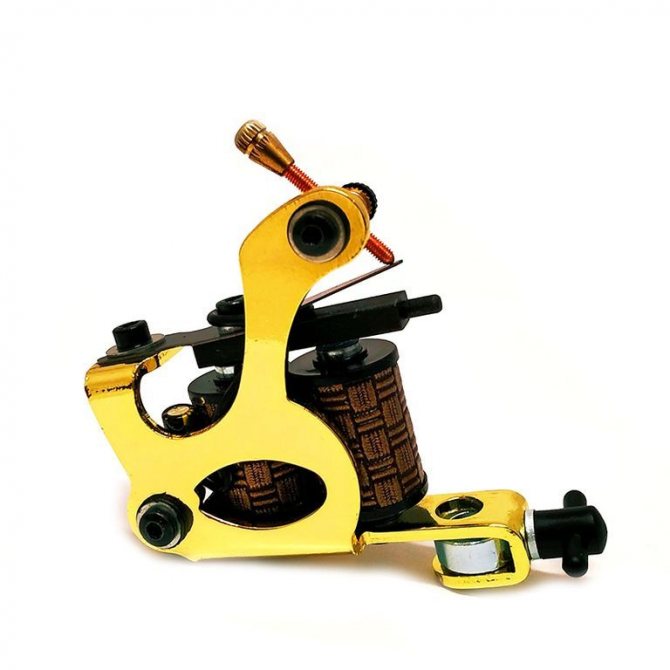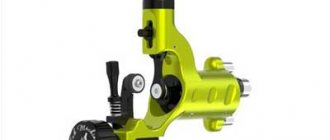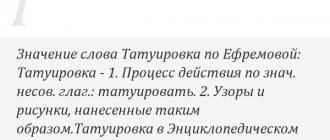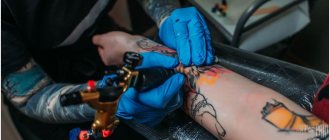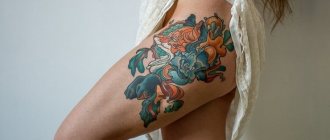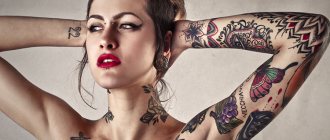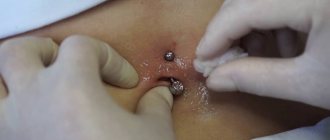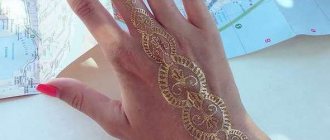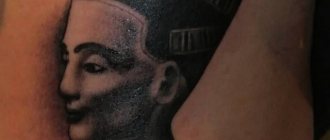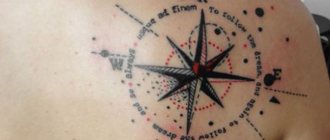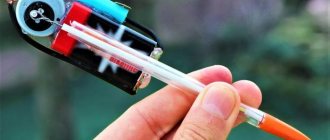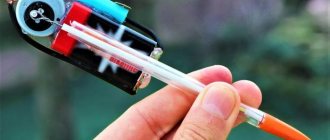What tattoo machines exist?
There are two types of machines in the tattoo industry: rotary and inductive.
Each type has several subtypes, differing in the objectives pursued by the master. The principle of operation of any machine is to feed a needle to the place of drawing.
Induction tattoo machine
This type has a more complex device, requires fine-tuning and a narrow focus of action.
There are two subtypes of induction machines:
- Liner - with the help of this machine, clear contours and lines are created. This machine has a small weight, high power and noise (120-150 Hz) and a rigid spring.
- Shader - this machine creates a dense and uniform shade and shade. Such machine has a lot of weight, works on medium power (60-100 Hz) and less traumatic to the skin.
This option is more suitable for tattoos and for experienced craftsmen.
Giving preference to this type of tattoo machine, you should understand that the work will require two machines - for the outline and paint, which means the purchase will be expensive.
Rotary Tattoo Machine
Rotary machines are versatile, easy to use and affordable. They do not require any special settings, just insert the cartridge and you can work.
A distinctive feature of these machines - the presence of a motor (motor). With its help it is easy to change and adjust the frequency of movement of the needle.
The needle clamping system is an additional plus in favor of rotary tattoo machines. With this system, the possibility of skin scarring is eliminated.
There are five subtypes of rotary tattoo machines:
- Direct is the simplest and most affordable model of rotary tattoo machines. It consists of: a motor, a body, an eccentric and a lock. To set any kind of needle movement in this model will not work, because the needle is attached directly to the eccentric. Nevertheless, it is an excellent option for a beginner.
- Straightedge is a more complex and expensive design, due to the presence of the striker. The work with this machine is characterized by accuracy and stability.
- The handle - the design of this model is the most convenient for the master, and therefore is the most popular. These machines are quite demanding and not cheap in service. They create a soft shading.
- Slider - the distinctive detail of this tattoo machine is a slider (slider), which provides a smooth and stable movement of the needle.
- The piston is a subtype of tattoo machine similar to the Slider, but instead of a slider, the design uses a piston.
WTE
There is probably not a single tattoo artist who has not heard the name of this brand. The great popularity of WTE lies in the competent approach of the developers to their business. Each model is a universal combination of high quality and reasonable price. Among the induction machines, the most in demand is the Jons 2 Liner model:
- quite simple, but high-quality and versatile model with which you can create contours of any complexity;
- The stylish design is skillfully combined with a practical aspect. The one-piece frame (except for the side panels) increases the accuracy and efficiency of the machine and lightens the body;
- the machine is equipped with a softer lock and has 8 coils on the spool;
- The speed of this model reaches 125 strokes per second.
What is the difference between a rotary tattoo machine and an induction tattoo machine?
| Rotary tattoo machine: | Induction tattoo machine: |
|
|
Tuning
There are two types of setup:
- assembly and initial adjustment of the controls;
- Fine calibration.
Initial setting
Power
Connect the power supply. Insert the power cable (clip cord) into the appropriate socket, to the machine. "Plus" is connected to the rear bind of the machine (round brass element), and "minus" to the frame. Then connect the wire to the pedal. Do not mix up the polarities on the clip cord, otherwise it will cause accelerated wear of the capacitor and inefficient operation of the unit.
Preparing to assemble
Lay out on a disinfected table:
- set of keys. Preferably two sets - sterilized, for assembly and ordinary, for disassembly;
- holder;
- Back tube and the tip (tipsa);
- tattoo needle;
- nipples and bandages.
Next we put on gloves and proceed to assembly.
Assembly and adjustment of the induction tattoo machine
- First we take the holder, in which the back tube is installed, and in it the tip. Both elements are fastened tightly;
- The needle is installed in the assembled holder;
- A nipple is put on the rod leading to the striker;
- The assembled holder is inserted into the hole of the tattoo machine and fixed with the tension screw. We do not tighten the screw too much, so that you do not have problems with the adjustment of the needle;
- The needle bar is fixed to the frame with a bandage rubber to eliminate unnecessary vibrations;
- a disposable bag is put on the clip cord;
- turn on the machine, press the pedal and try out the sound during operation. Turn the screw to one side or the other until you get the right pitch.
Next, connect the machine to the power supply, try it in operation, adjust the hertz, and adjust the tension screw to achieve a clean sound during operation: no sticking, strong or uneven knocking.
Fine calibration.
Is made in the workshop of the manufacturer, by the hands of experienced tattoo artists, or by the owner, after he understands the principles of the machine. Precise tuning of the induction tattoo machine is expressed in the change of such characteristics:
- stroke length;
- The force of the spring compression (sometimes by changing the spring);
- the correct tension of the bandage gum;
- setting a different air gap, between the front coil and the bottom surface of the striker (by tightening the contact screw);
- by setting the gap balance point (by tightening the contact screw).
There can also be manipulation with replacing capacitors and increasing and decreasing the number of coils on the coils.
Maintenance
- Machine frame and holder, disinfect 1-2 times a week with chemicals, and wipe down afterwards with gun oil or flushing oil to avoid corrosion;
- periodically clean the fouling (from the electric arc) from the front contact spring;
- It is advisable to change the nipples and bandaids or after each work as they are prone to contamination.
The best tattoo machines according to our customers
Our store carries the "Hand" type rotary tattoo machines because they are versatile and easy to use, as well as great for beginners.
Below we share the most popular models of tattoo machines, which most often buy in our store.
P10 MAST WQ 367 Rotary Tattoo and Permanente Machine
This model is suitable for small tattoos, eyebrows, eyes and lips tattooing. It is considered a very thin, lightweight and compact machine. Compatible with all standard EZ, Kwadron type cartridges.
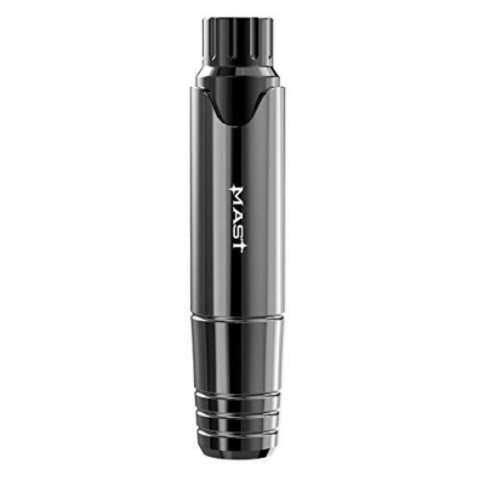
EZ P4 mini rotary tattoo and permanente machine
The miniature P4 is the only lightweight design weighing only 85 grams. Provides hand comfort and reduces hand fatigue, making it ideal for long sessions. Ideal for micropigmentation and permanent makeup (eyebrows, eyeliner, lips, hairs and trichopigmentation).

MAST TOUR WQ366 (MINI) rotary tattoo and permanent makeup machine
This is the smallest tattoo machine. Universal, suitable for any job. In working condition, the LED backlight is on.
Verge
This workshop is trusted by many tattoo artists. The brand is famous for its reliable, durable machines with a simple adjustment and control system. Professionals advise to take a closer look at the models of this manufacturer not only for experienced, but also for beginners. Among the most popular modifications is the shadow Dog Shader, which is famous for the following parameters:
- steel frame;
- stylish and neat design;
- powerful engine;
- works with needles up to 15M.
This brutal and powerful machine from Verge is always a pleasure to hold in your hands. And the quality of parts allows you not to worry about the operation of the machine for a long time.
Tattoos have long been an important part of modern culture, but the tools have been changing for thousands of years!
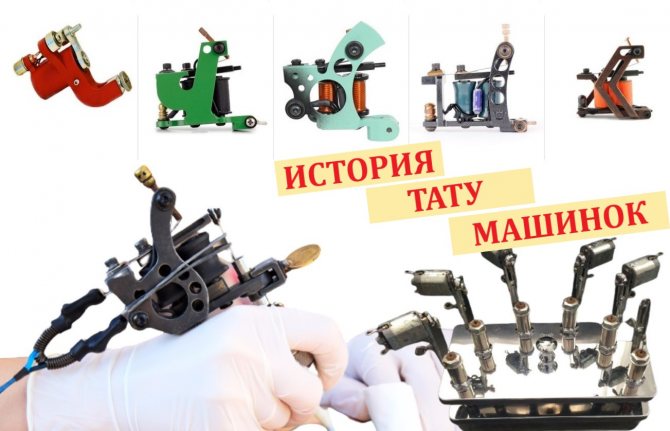

In September 1991, archaeologists Erika and Helmut Simon decided to hike to the Val Senales glacier in the Alpine mountains, located on the border of Italy and Austria. On the way, at an altitude of about 3200 meters above sea level, they noticed something disturbing and unpleasant - the torso of a man sticking out of the ice .
It was unclear how long the body had been trapped. The husband and wife reported their discovery to the local cabin attendant, who reported it to the authorities. But they did not immediately realize the importance of the find: in 1991, several other bodies had already been discovered - they had thawed because of the abnormally hot summer. The police suggested that this man was also a traveler who died in an accident.
But when the violent storm finally subsided a few days later, archaeologists examined the corpse and determined that the man found was no hiker and that he was over 5,300 years old! It was the "ice man" Etzi, the oldest known Neolithic man ever discovered. And also the man with the oldest tattoo in the world.


"This find was a turning point for archaeologists," stressed Andreas Putzer, who works at the Italian South Tyrolean Archaeological Museum in Bolzano, where the remains of Etzi can be seen today. - Perhaps if we find other mummies, they too will have tattoos, but for now we can only speculate."
In the several millennia since Etzi got his ink, tattooing techniques have gone far beyond any ancient techniques used by the Iceman. From the painful practice of using sharp objects and rubbing charcoal into the skin to pneumatic devices that work with the same basic technology as air brakes on trains, tattoo art has become a cultural practice and a modern rite of "initiation."


Photo: ru.wikipedia.org
A discovery site in the Otztal Alps between Austria and Italy in September 1991.
Tattoomechanics
Those who are not familiar with the name of the brand have definitely heard the name of Dmitry Utev, whose knowledge formed the basis for the elaboration of every detail. The Bulldog liner is the most interesting for masters in this manufacturer's lineup:
- One of the best options for creating fine contours;
- experienced craftsmen will appreciate the sturdiness of the machine, its stable operation and a wide range of options;
- works with needles up to 9 RL without a single misfire;
A pleasant surprise for many masters will be the cost of this model.
Ancient Beginnings
Etzi's preserved skin is covered with 61 marks scattered across his wrists, ankles, and lower back. Each one is a simple line or cross. Curiously, almost all of the marks are at or near the joints, meaning that most of the time the clothing almost certainly concealed the body art.
Scientists have wondered: What were these drawings - symbolic or therapeutic?
Judging by the age of Etzi, which, according to the radiocarbon method, ranges from 5100 to 5400 years, the ice man lived 3000 years before the appearance of the ancient Chinese practice of acupuncture . Yet the position of the needles coincides with common acupuncture points. According to a June 2021 study published in the International Journal of Paleopathology, the image o.
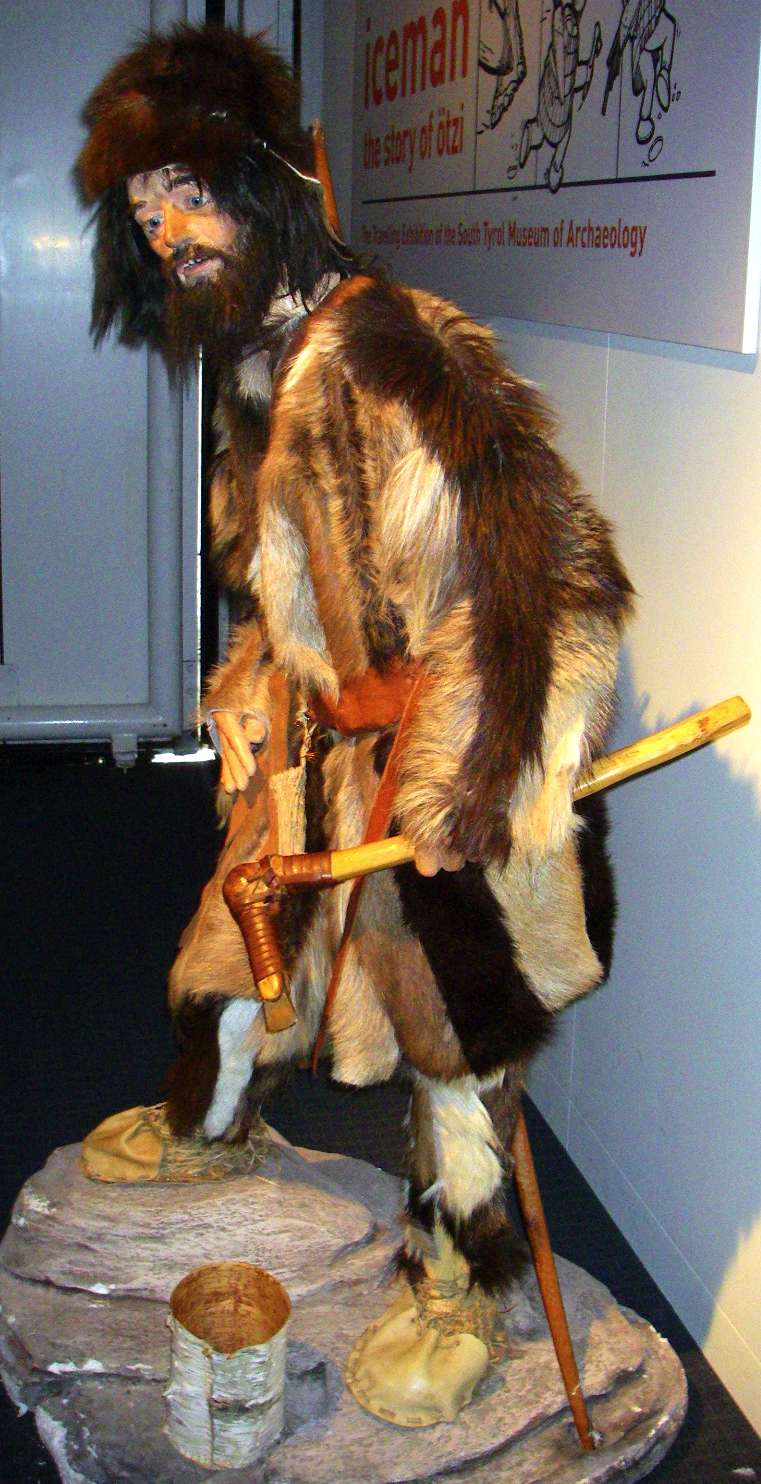

Photo: donsmaps.com
Reconstruction of the Iceman Etzi who lived during the Neolithic period
To identify all of Etzi's tattoos, Italian researchers used "noninvasive multispectral photographic imaging techniques"capable of "seeing" in a range from infrared to ultraviolet light through the electromagnetic spectrum. Experts eventually confirmed 61 tattoos, divided into 19 groups, on various parts of the body, according to a 2015 article in the Journal of Cultural Heritage.
"We determined that during his lifetime, Etzi suffered from pain, especially in his back area, because he walked a lot in the mountains. And he also had a broken one of his menisci, which also had tattoos in place - most likely the pain was there as well," Putzer explained. - You see the tattoos on the sick parts of the body, so we concluded that the body art was therapeutic and not decorative.
Another finding only complicated the situation: Researchers found that no simple needle would have left similar marks on Etzi's skin. Something tougher was imprinted there. Researchers believe that Etzi's "tattoos" are the result of thin cuts made with crushed charcoal, not unlike the practice of "stick and poke" or dotting color with ink and a needle.
And although scientists admit that stone or copper tools were used for tattooing, they do not abandon the theory that Etzi and his tribesmen pierced the skin with sharp bone tools. Back in 1963, on the Polynesian island of Tongatapu (Tonga), scientists found one of the oldest tattoo kits - it contained a whole arsenal of equipment made from albatross or even human bones.
YouTube
One of the oldest tattooing tools
The next evidence of ancient tattooing is a pair of mummies known as the "Hebelian man" and "Hebelian woman," estimated to be over 5,000 years old . Strangely enough, tattoos then virtually disappear from the archaeological record for an entire millennium, until scientists discover new tattooed bodies between 2400 and 1070 B.C. It was then, according to experts, that the Egyptians introduced the first metal needles for tattoos.
The Petrie Museum of Egyptian Archaeology at University College London houses a series of tapered metal tools. According to the museum's catalog , they are called "butts with seven thorns" and are designed to remove thorns from the skin. It is noteworthy that three of them are tied with a thread.
On closer inspection, British archaeologist Charlotte Booth discovered that the "thorns" were made by bending in the corners of a flat rectangle of bronze, and only then were nailed to a smooth surface. The "barbs," which were bound together by thread, eventually fused together as a result of corrosion.
Booth observed that although the tips were sharp, it was not enough to remove the spikes from the skin or to function as tweezers. So it is possible that the Egyptians used pointed bronze tips to apply ink to the skin.
As needles in modern tattoo guns are not hollow, as needles for hypodermic injections, usually they are attached in groups of 3-7 pieces for a linear technique. Therefore, it is safe to say that they have a lot in common with Egyptian needles.
How to choose?
To understand which equipment is better to buy, it is worth first determining the main criteria for selection. These include:
- The purpose of the device;
- Technical characteristics;
- Manufacturer;
- Personal preferences.
Purpose of the machine
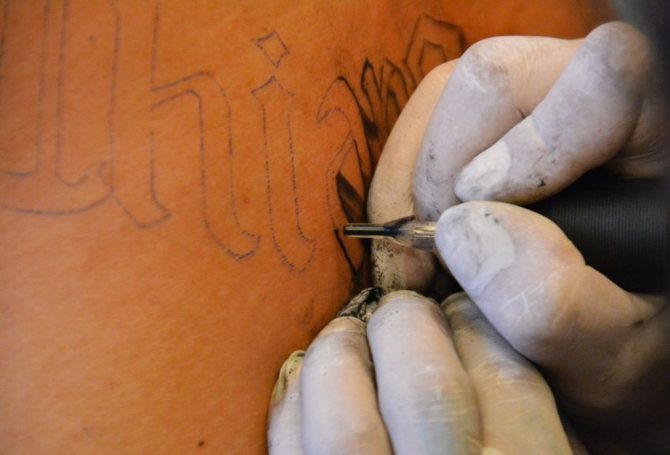

According to the purpose of tattoo devices are divided into the following types:
- overpainting - used to work with large "areas" and large-scale drawings. Coloring machines create conditions for the flow of pigment under the skin, which allows you to fill the picture with color and form uniform color fields.
- contouring - used to "score" the paint as quickly as possible. This is necessary to prevent the pigment from spreading under the skin. It is the speed of penetration and extraction of the needle that is most important for creating the contour of the future drawing. However, it is strictly forbidden to paint with a contour machine - it will irreversibly spoil not only the client's skin, but also the drawing.
- Universal - used both for creating the contour, and for color filling and shadowing. A universal machine (for example, a rotary) is good for performing multi-color drawings.
Main technical characteristics
| Number | Specifications | Recommendations |
| 1 | How it works | In rotary equipment, the driving force is converted into a rotary force, and then into a translational force. The needles are moved by the motor. It is the motor that ensures uniform contact between the needles and the skin. Rotary devices operate directly from the mains. Induction machines are more complicated - the needles are fed by electromagnetic coils that in turn attract and repel the steel bead. An induction machine needs a power supply and a foot pedal. Pneumatic units function through the supply of compressed air. |
| 2 | Frame | The frame is the basis of the construction. All the main parts are assembled on it. It must be strong and rigid, but it should be lightweight and not wear out. The material from which the frame is made is very important. Most often stainless steel and aluminum are used, less often bronze and polymers. |
| 3 | Assembly of the device | The correctness of the frame and coils, the quality of contacts and springs - plays a big role. Everything must be securely connected in a single design. |
| 4 | Power Supply | Good indicators for the power supply, which will ensure uninterrupted comfortable use - is the voltage of 5 to 12 V, the power of 2 to 3.5 A. |
| 5 | Noise level | Induction ones are noticeably noisy because of the strong vibration and speed of the needles. Rotary ones are much more comfortable in this respect. |
| 6 | Weight | Rotary machines are characterized by low weight, while induction machines are heavier. In this regard, when working with rotary equipment, the hand of the master experiences less stress, which increases the duration of the session and minimizes the risk of making a careless movement. |
| 7 | How much does it cost | Induction units differ in price from induction units - they are inexpensive. Rotary ones cost more - they range in price from $1,500,000 to $20,000,000. The most expensive due to their rarity are pneumatic devices. |
Manufacturers
Deciding what company's equipment is better, you should first of all pay attention to proven brands. The best manufacturers of tattooing devices are such well-known brands as:
- "EGO";
- "Stigma Rotary;
- "Ink Machins;
- "Cheyenne;
- "FK Irons;
- "Swiss Tattoo Machins.
Brand-name machines are good because the service centers of well-known manufacturers are more widespread, and it is easier to pick up consumables for such equipment.
Popular models are made by Chinese firms, and therefore they should not be ignored. Manufacturers from the Celestial Empire are actively developing and working to improve the quality of their equipment. Chinese machines - budget, but for such a purchase should be treated very responsibly, carefully review the description of the goods, so as not to regret then thoughtlessly committed purchase.
Personal preferences
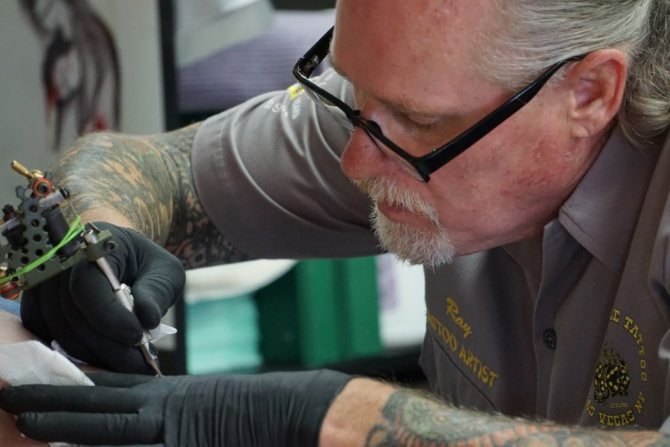

The tattooing machine is purchased once and for a long time. With it must be comfortable and easy to work, that is why when buying should be concerned about "trying on". The equipment should lie comfortably in a hand, not to constraint a wrist, to cause a pleasant sensation from tactile contact with the device material and as a whole to cause only positive emotions.
Assembly
Below we have given the simplest and most understandable diagram of NOT PEN machines. The Pan is assembled elementary - by putting the power wire in one hole and the module of the desired configuration in the other. It's impossible to mix it up, so we go straight to our circuit.
1. The frame of your tattoo machine. On it is the motor or coils. It is not involved in the assembly and preparation for work.
2. the eccentric in the rotor or the "hammer" with the spring in the induction machine. The power from the unit is converted into mechanical translational motion in these. The radius of the eccentric and the stroke of the described induction mechanism directly affect the "stiffness" of the operation.
3. A pin to which the needle bar or pusher bar is attached by a special "ear" using a nipple. The nipple/grommet is a special round rubber band with a hole in the middle.
4. Premade/needle is a prefabricated needle configuration soldered onto the bar. Disposable, sterile, and ready to use. Be sure to follow the sterilization time stamped on the package. Once it has expired, the needles must not be used. The manufacturer does not guarantee the safety of these consumables.
5. The pusher is a rod with an ear on one side and a "cam" on the other. It gives progressive movement from the back side of the module and the needle sticking in it.
6. Module/Cartridge - needle configuration + needle spout assembly. Has the same configurations as the needles. Disposable, sterile, ready to use. Similar to needles, watch closely for sterilization times. Never allow expired consumables to work on client's skin.
7. Needle nose - serves to prevent vertical and lateral play of needles during forward movement. Needle noses are not universal. Match them to the premade configuration you are using.
8. The holder is a device with a tube that you will use to hold the machine during operation. It will hold a needle or pusher rod on one side, and a module/cartridge or spout for the desired needle configuration on the other.
9. Holder tube retainer. Secures the holder to the tube, fully performing the duties assigned to it.
10. Pinchwheel. This prevents the boom from falling off the nipple. Always make sure that the rod is as close as possible to the center of the holder tube. If your tattoo machine is not equipped with a pinchwheel, use as many bandaids as necessary.
11. Connector for attaching the clip cord of the power equipment. If you are using a "horny" clip cord, make sure the polarity is correct.
Next, you plug the wire from the machine into the appropriate connector on the power supply and the pedal or plug into the pedal connector.
When problems occur, remember the golden rule of electrical engineering - ALWAYS start with the power supply, then check the wires, and then move on to the equipment.
Most machine problems are caused by frayed wires. Always run diagnostics systematically, step by step, eliminating all possible breakdowns.
So, your brand new tattoo machine is ready to go, and it's time to set it up.
Prime Coil
For those who prefer American classics, you won't find a better option. The brand stands out for its individual approach to each model. Machines are set up in manual mode and will help the master to embody any tasks. The most attractive model of this company can be called a paint machine - Machine Color Packer. Among the features of the machine are the following:
- manual assembly and debugging;
- high quality painting;
- suitable for working with large areas;
- goes confidently with any needle in the range of 7-15;
- cast frame.
The workshop pays great attention to the quality of every detail. The machines of this brand work forever, almost never misfire, and can be adjusted to any requirements of the craftsman.
Professionals who have tried more than one model have no doubts about their choice. Beginner masters should not chase after "gimmicks". One of the best options is a simple model, already adjusted by the manufacturer for certain tasks. By the way, most of these manufacturers have a spare spring, which is a nice bonus.
Tips for choice
In order not to make a mistake, when choosing, it is worth considering the following points:
- When buying a rotary machine, it is important to pay attention to its engine - it should be of high quality, because the service life of the device depends on it.
- A good power supply is necessary for the universal induction machine to function as efficiently as possible. Also the quality of its work depends on the internal filling - contacts, springs, coils and frame. Spare parts for the tattoo machine is not something that a good craftsman can save on.
- The pedal for the salon machine is best to choose an iron pedal. But the plastic, which is characterized by lightness and compactness will be suitable for work at the exit.
- Ideally, a good craftsman should have two machines for different types of techniques, for example, induction and rotary.
Where to buy?


Considering the purchase of tattoo-equipment it is necessary to choose not only a model and a brand of the machine, but also to define the place of purchase.
It is possible to buy not only in a usual store specializing in the sale of goods for tattoo artists, but also to order online from the Internet-shop.
The first option is good because there is an opportunity to touch the selected product, look at all sides, to study for defects and compliance with all the manufacturer's stated characteristics.
The second option allows you to save time by placing an order at any convenient time, and there is no need to go somewhere and look for something. All items in stock at the seller are displayed on the site and provided with a detailed description. You can also read reviews for the chosen model or leave your own after receiving your order. Purchase is delivered in a convenient way for the buyer. The order of payment is also chosen.
But remember that only trusted stores and sellers should be trusted. And do not engage in dubious transactions and do not agree to suspicious offers.
Advantages and disadvantages
The advantages of pneumatic tattoo machines:
- Low weight;
- Silent;
- Maximum ease of use;
- Suitable for any type of work.
Disadvantages:
- High cost;
- Small selection of models;
- The line of pneumatic type devices is practically not presented on the Russian market;
- Difficulties with service.
Advantages of induction machines:
- Control of oscillation amplitude and uniform distribution of needle movement;
- Minimal needle strike errors;
- Deliver a minimum of pain when applying tattoos;
- Suitable for tattoos of any complexity;
- Good for working with problem areas, for example, where there are a lot of fat deposits.
Disadvantages:
- Strong vibration when working;
- Noisy.
Advantages of rotary devices:
- Lightweight;
- Characterized by a low level of vibration;
- Have a high efficiency;
- Produce little noise;
- Have a smooth stroke, which is comfortable for the master;
- Suitable for first pattern;
- Create clear lines;
- Allow you to create multi-color artistic tattoos.
Disadvantages:
- In terms of clarity of lines inferior to induction;
- Can be painful. The needle is fed at a right angle, so the craftsman has to repeatedly work the same area of skin;
- Not suitable for filling large patterns with color.


